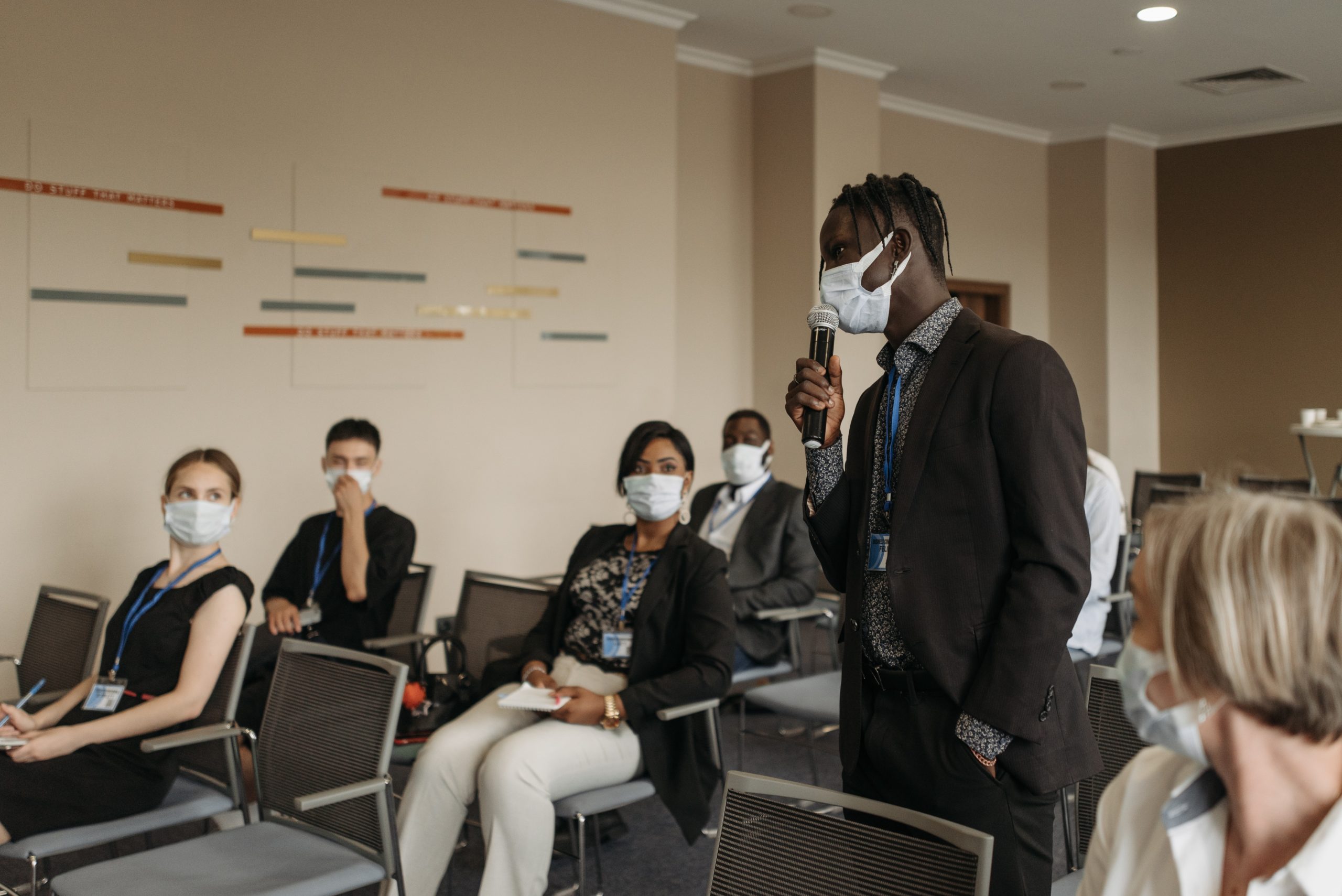By Daria Knupp, Content Marketing Manager
Remember when your biggest worry as an event organizer was trying to pick the right date? The years 2020 and 2021 have certainly made us miss those days. We have had to adapt to the “new normal” and plan every event around the unknown.
With vaccinations and boosters becoming more widespread, in-person events are returning, and important considerations must be made. Event organizing is no longer just about specific dates, costs, and spaces but also about safety, efficiency, and transparency.
We recently reached out to a couple events industry experts to hear how they have adapted to this new phase. Here are some careful safety considerations to keep in mind as you plan in-person trade shows and conferences.
Pulse Check Your Prospective Attendees
First and foremost, If you haven’t already been doing so, engage with your audience to get a better feel on how comfortable they are returning to in-person events. The Omicron variant has certainly impacted some opinions. Engaging with them can be anything from sending out a simple survey to calling past participants.
“Your attendees are the key component to the event,” explains Tara Reed, Chairman of the Clinton County, Ohio, Chamber of Commerce. “If you have a good read on what they want to do, that can help jumpstart the planning process and help guide your core decisions.
When planning an event this past summer, the chamber knew their audience was ready to start participating again, and they appreciated the fact that they were consulted, said Reed.
While every industry and audience is different, data does show that people are, in fact, ready to start returning to in-person events. According to a recent Freeman study, 94 percent of attendees expect to attend in-person events in the winter of 2021.
Have a Solid Understanding of Your Event Venue’s Health and Safety Protocols
Once you get a rough idea of how many attendees will be present, it’s important to evaluate whether your venue aligns with your health and safety requirements. Guidelines are continually changing, so you need to make sure you are prepared for every scenario.
Some questions to ask a potential venue for safety considerations include:
- What are your state and local guidelines regarding COVID-19 safety? Have they changed with the Omicron variant?
- Are there additional requirements in the venue, such as proof of vaccine?
- What are the capacity limits? Can attendees be safely accommodated inside the venue? Do these impact your program or event(s)?
- Are there any areas where overcrowding can occur?
- How often do you clean common spaces?
These are just some suggestion questions, but by working together and keeping everyone on the same page, you can help ensure the health and safety of your staff, suppliers, and attendees from set-up to teardown. You may also want to designate a staff member to ensure all guidelines are followed during the event.
Clearly Communicate and Be Fully Transparent with Safety Considerations
From your email marketing to your onsite communications, it is critical that you effectively communicate what you expect from your audiences. Many attendees may be anxious, but you can help put concerns at bay with the following tips.
Pre-Event
Clearly communicate not only the benefits of attending in-person but also that attendee safety is being taken seriously.
“If you are planning a trade show or conference, safety is your first priority,” says Michelle Harman, Senior Director of Event Engagement at Captello. Safety measures can include proof of vaccine, rapid COVID tests, or health questionnaires and temperature checks. Make sure that attendees know those measures right off the bat so that they can determine what they’re comfortable with—and what they’re prepared for. Communicate them to guests via email before the event, and post them on your website. You want to have a nice balance of not talking about safety measures constantly but also being mindful of concerns.
During the Event
Think through your event flow from start to finish, and determine where you can add value with small details.
Consider going old-school and post notices at all entrances and in well-traveled areas such as restrooms and common areas. Not everyone reads emails, and they could miss staff guidelines during check-in. Also, make sure to properly scan badges so that non-attendees aren’t roaming freely around the event space. Harman even suggests making a game out of badge scanning. Set up a Master Events Leaderboard and offer prizes for the top attendees. The more an attendee has their badge scanned, the closer they are to winning a prize!
Post-Event
You can follow up with attendees as you normally would, but think about adding a health and safety question to your typical survey. Clearly communicate the steps you took to make attendees feel safe and reiterate your commitment to their health and safety. It is a great way to gauge how the attendees felt and collect data about any necessary adjustments for future events. Chances are, if the attendees were comfortable, they will attend future events, which is good news for everyone. Ultimately, everyone has different comfort levels, but by practicing open communication and transparency, you can build trust and make attendees more comfortable with returning to in-person events.
Closing Thoughts on Safety Considerations
These suggestions are just a few considerations to keep in mind when thinking about returning to in-person events. By adhering to safety guidelines, everyone from your staff to your partners to your attendees will feel confident that you have their best interests at heart.
The future of events is exciting. By keeping these considerations in mind, you can set yourself up for even greater success.
Need an in-person-events technology solution? Get a free demo of our events platform to see how we can help you with your next in-person event.
